-
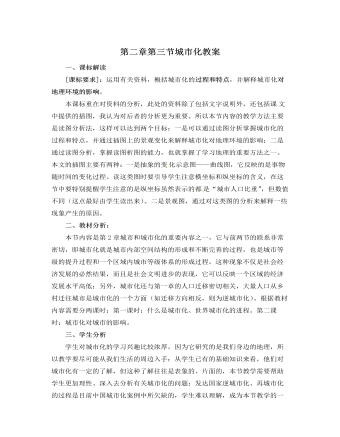
人教版新课标高中地理必修2第二章第三节城市化教案
[补充]:郑州是特大城市,我们对灯火通明的夜晚都有深刻的体会,我们都体会过光给他们带来的好处,而对过多过亮的光带来的危害则很少认真地思考过,且光污染给都市人们和其他生物和环境带来的不利影响也越来越大,所以,我在这儿给同学们补充光污染,目的是提醒他们要增强环保意识,要理解城市在建设过程中要减少城市各类活动对环境的污染;另外,随着城市的不断发展,还可能会产生新 的污染物。还培养了学生用发展的眼光来看世界。[思考]:如何降低城市化对地理环境产生的影响?[答]:发展生态城市,使人工环境和自然环境和谐统一起来。一方面在城市建设中,要发展低污染的节能建筑和绿色交通,减少城市各类活动对环境的污染;另一方面使城市景观尽可能地与山、河、湖、海、植被等自然景观保持协调,建立一种良性循环。
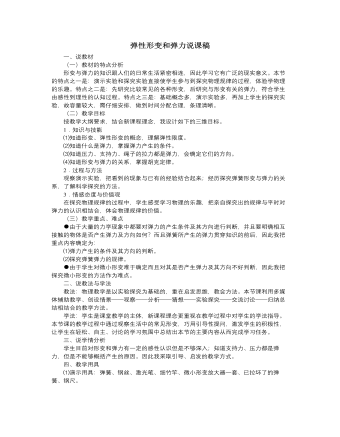
人教版新课标高中物理必修1弹性形变和弹力说课稿
在同一个直角坐标,做出两个不同弹簧的F—X图象,然后进行比较。图象法处理数据更为直观,更容易得出物理变化规律,且该种方法处理数据能更好地减小实验的偶然误差。最后老师归纳总结:得出胡克定律:F=KX(K为弹簧的颈度系数)[设计意图:在探究弹力的大小与形变的定量关系时,由学生进行猜想、实验和得出规律,并利用信息技术计算机绘制F—X图象,充分利用信息技术资源和物理学科的整合。能较好地体现以学生为主的新的教学理念。对探究实验过程教师加以指导,使学生学会团结合作、学会探究物理规律;再加上熟练信息技术,更有效地提高学习效率。](五)弹力的应用(图片,视频播放:射箭)[设计意图:让学生知道产品设计离不开物理理论,做到从实践到理论,再从理论到实践的学习过程。](六)开放式问题(视频播放:撑杆跳高、跳水);提出问题:通过本节内容的学习,请同学们开放式地讨论①从形变与弹力知识去思考,撑杆跳高运动员跳得这么高的主要原因是什么?②跳水运动员在空中滞空时间主要由哪方面决定?
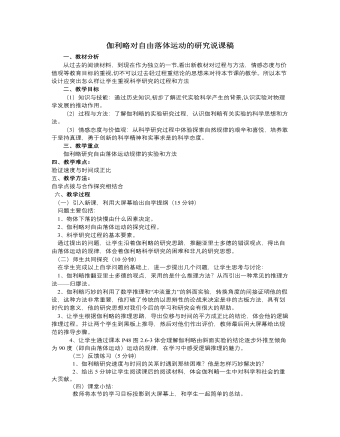
人教版新课标高中物理必修1伽利略对自由落体运动的研究说课稿
(三)反馈练习(5分钟)1、伽利略研究速度与时间的关系时遇到那些困难?他是怎样巧妙解决的?2、给出5分钟让学生阅读课后的阅读材料,体会伽利略一生中对科学和社会的重大贡献。(四)课堂小结:教师将本节的学习目标投影到大屏幕上,和学生一起简单的总结。(五)课后作业1、利用现代的测量仪器设计出一个研究自由落体运动规律的实验,写出需要的器材和实验过程。2、请学生再总结出一些科学研究中常用的思路和方法。通过这两个作业,进一步提高学生的科学研究的意识和素质。本设计所涉及到的科学研究方法:1、归缪法——伽利略用亚里士多德的观点推翻了翻亚里士多德的观点。2、转换法——伽利略用数学推理和斜面实验间接证明他的假设。3、逻辑推理法——用数学方法推理出速度正比于时间则位移与时间二次方成正比。4、外推法——由斜面实验外推至自由落体运动运动规律
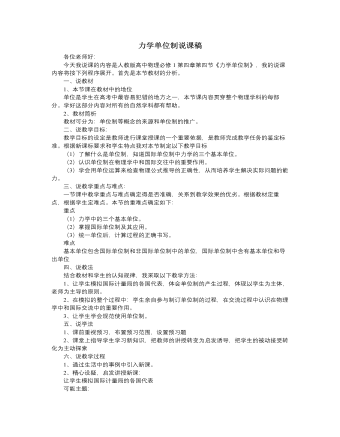
人教版新课标高中物理必修1力学单位制说课稿
今天我说课的内容是人教版高中物理必修1第四章第四节《力学单位制》,我的说课内容将按下列程序展开。首先是本节教材的分析。一、说教材1、本节课在教材中的地位单位是学生在高考中最容易犯错的地方之一,本节课内容贯穿整个物理学科的每部分。学好这部分内容对所有的自然学科都有帮助。2、教材简析教材可分为:单位制等概念的来源和单位制的推广。二、说教学目标:教学目标的设定是教师进行课堂授课的一个重要依据,是教师完成教学任务的鉴定标准。根据新课标要求和学生特点我对本节制定以下教学目标(1)了解什么是单位制,知道国际单位制中力学的三个基本单位。(2)认识单位制在物理学中和国际交往中的重要作用。(3)学会用单位运算来检查物理公式推导的正确性,从而培养学生解决实际问题的能力。
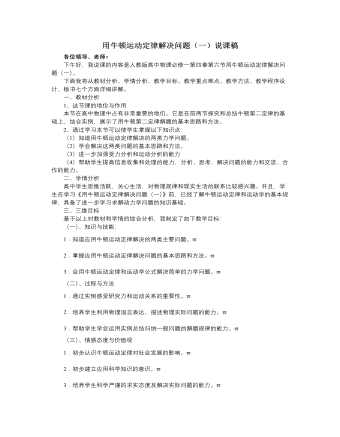
人教版新课标高中物理必修1用牛顿运动定律解决问题(一)说课稿
六、教学程序设计(“一三五”模式)为了完成这节课的教学目标,我是这样安排的:第一环节: (约10分钟)根据对自主探究案的批阅情况,解决学生的遗留问题具体实施:投影学生的自主探究案,让学生交流讨论,教师点评。第二环节: ( 约30分钟)新课学习:在“课堂互动案”的导学提纲引领下,完成这节课的三维教学目标。具体实施:多媒体辅助教学、交流讨论。第三环节: (约5分钟)课堂小结和布置作业:为了体现课程改革的新理念——学生是学习的主人,我改变传统的教师总结为学生总结的模式,既强化了学生所学的知识,又培养了学生的归纳和概括能力。作业分为两部分:(1)书面作业p85,1、2、3、4。(2)完成“应用提升案”。七、板书设计由于多媒体在物理教学中仅是一种辅助手段,不能完全取代黑板,因此一节课的主要内容和学生的必要参与还需要借助黑板来帮助。我在这节课的板书设计中突出了主要内容,简洁明了。

人教版新课标高中物理必修2验证机械能守恒定律说课稿
一、 教材分析与学情分析教材分析人民教育出版社普通高中课程标准实验教科书必修2第七章第九节。本节内容安排在学习机械能守恒定律之后的目的,是为了使学生在理论上对机械能守恒定律有所了解的基础上,通过实验测量及对实验数据的分析处理,对机械能守恒定律及条件有深刻的认识。学情分析知识层面:学生已经掌握了动能、重力势能等概念以及动能定理、机械能守恒定律等定理、定律;知道功是能量转换的量度以及机械能守恒的条件。能力层面:学生已具备一定的实验操作技能,会用打点计时器以及直尺等实验仪器。具备一定的数据处理能力。二、教学目标与重点、难点教学目标知识与技能:1、会用打点计时器打下的纸带计算物体运动的速度。2、掌握验证机械能守恒定律的实验原理。
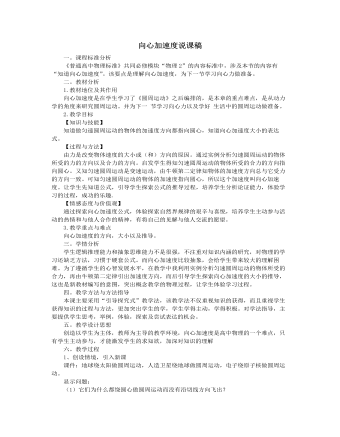
人教版新课标高中物理必修2向心加速度说课稿
d.某物体沿直线向东运动,原来的速度是5m/s,2s后速度减小到3m/s,求2s内物体速度变化。④如何探究物体作匀速圆周运动时,在Δt时间内的速度变化?分析:有了同一直线上速度变化的铺垫后,讨论物体做匀速圆周运动速度的变化就比较自然了,为了给向心加速度方向的学习打好基础,可以通过小组协作,进一步完成下列思考题,使同学们认识到:时间间隔起短,速度变化的方向起接近半径方向。(多媒体屏幕投影)a.物体沿半径为1m的轨道做匀速圆周运动,线速度大小为,求1s内物体速度变化并画出1s内速度变化的示意图。b.分别求出上题中物体在0.5s、0.25s内速度变化并画出相应的示意图。由于没有办法直接利用实验来验证速度变化的方向,所以,我们采用提供思考题的方法,引导同学在合作学习、自主探究中完成。有了速度变化的研究为铺垫,加速度的方向问题就迎刃而解了。
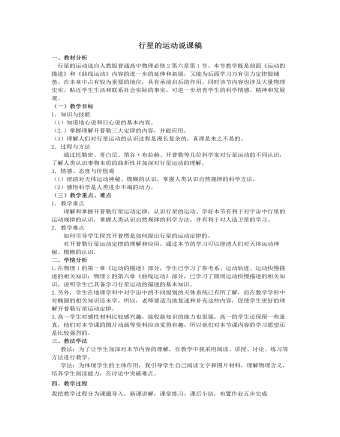
人教版新课标高中物理必修2行星的运动说课稿
一、教材分析行星的运动选自人教版普通高中物理必修2第六章第1节。本节教学既是前面《运动的描述》和《曲线运动》内容的进一步的延伸和拓展,又能为后面学习万有引力定律做铺垫。在本章中占有较为重要的地位,具有承前启后的作用。同时该节内容也涉及大量物理史实、贴近学生生活和联系社会实际的事实,可进一步培育学生的科学情感、精神和发展观。(一)教学目标 1.知识与技能(1)知道地心说和日心说的基本内容。(2.)掌握理解开普勒三大定律的内容,并能应用。(3)理解人们对行星运动的认识过程是漫长复杂的,真理是来之不易的。2.过程与方法通过托勒密、哥白尼、第谷·布拉赫、开普勒等几位科学家对行星运动的不同认识,了解人类认识事物本质的曲折性并加深对行星运动的理解。3.情感、态度与价值观(1)澄清对天体运动神秘、模糊的认识,掌握人类认识自然规律的科学方法。(2)感悟科学是人类进步不竭的动力。

两直线的交点坐标教学设计人教A版高中数学选择性必修第一册
1.直线2x+y+8=0和直线x+y-1=0的交点坐标是( )A.(-9,-10) B.(-9,10) C.(9,10) D.(9,-10)解析:解方程组{■(2x+y+8=0"," @x+y"-" 1=0"," )┤得{■(x="-" 9"," @y=10"," )┤即交点坐标是(-9,10).答案:B 2.直线2x+3y-k=0和直线x-ky+12=0的交点在x轴上,则k的值为( )A.-24 B.24 C.6 D.± 6解析:∵直线2x+3y-k=0和直线x-ky+12=0的交点在x轴上,可设交点坐标为(a,0),∴{■(2a"-" k=0"," @a+12=0"," )┤解得{■(a="-" 12"," @k="-" 24"," )┤故选A.答案:A 3.已知直线l1:ax+y-6=0与l2:x+(a-2)y+a-1=0相交于点P,若l1⊥l2,则点P的坐标为 . 解析:∵直线l1:ax+y-6=0与l2:x+(a-2)y+a-1=0相交于点P,且l1⊥l2,∴a×1+1×(a-2)=0,解得a=1,联立方程{■(x+y"-" 6=0"," @x"-" y=0"," )┤易得x=3,y=3,∴点P的坐标为(3,3).答案:(3,3) 4.求证:不论m为何值,直线(m-1)x+(2m-1)y=m-5都通过一定点. 证明:将原方程按m的降幂排列,整理得(x+2y-1)m-(x+y-5)=0,此式对于m的任意实数值都成立,根据恒等式的要求,m的一次项系数与常数项均等于零,故有{■(x+2y"-" 1=0"," @x+y"-" 5=0"," )┤解得{■(x=9"," @y="-" 4"." )┤
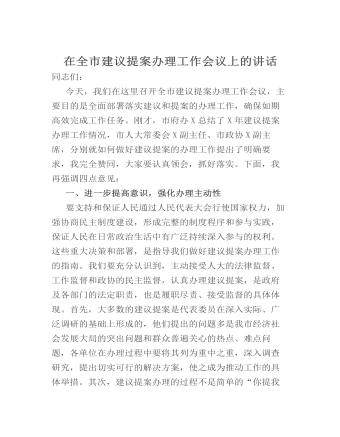
在全市建议提案办理工作会议上的讲话
要支持和保证人民通过人民代表大会行使国家权力,加强协商民主制度建设,形成完整的制度程序和参与实践,保证人民在日常政治生活中有广泛持续深入参与的权利。这些重大决策和部署,是指导我们做好建议提案办理工作的指南。我们要充分认识到,主动接受人大的法律监督、工作监督和政协的民主监督,认真办理建议提案,是政府及各部门的法定职责,也是履职尽责、接受监督的具体体现。首先,大多数的建议提案是代表委员在深入实际、广泛调研的基础上形成的,他们提出的问题多是我市经济社会发展大局的突出问题和群众普遍关心的热点、难点问题,

在全市建议提案办理工作会议上的讲话
一、进一步提高意识,强化办理主动性要支持和保证人民通过人民代表大会行使国家权力,加强协商民主制度建设,形成完整的制度程序和参与实践,保证人民在日常政治生活中有广泛持续深入参与的权利。这些重大决策和部署,是指导我们做好建议提案办理工作的指南。我们要充分认识到,主动接受人大的法律监督、工作监督和政协的民主监督,认真办理建议提案,是政府及各部门的法定职责,也是履职尽责、接受监督的具体体现。首先,大多数的建议提案是代表委员在深入实际、广泛调研的基础上形成的,他们提出的问题多是我市经济社会发展大局的突出问题和群众普遍关心的热点、难点问题,各单位在办理过程中要将其列为重中之重,深入调查研究,提出切实可行的解决方案,使之成为推动工作的具体举措。
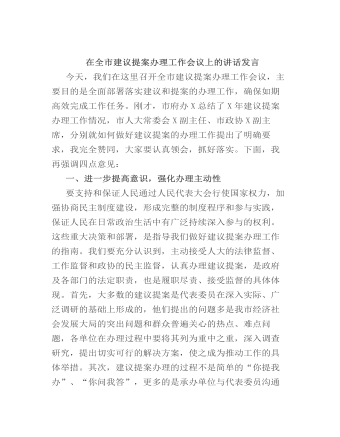
在全市建议提案办理工作会议上的讲话发言
一、进一步提高意识,强化办理主动性要支持和保证人民通过人民代表大会行使国家权力,加强协商民主制度建设,形成完整的制度程序和参与实践,保证人民在日常政治生活中有广泛持续深入参与的权利。这些重大决策和部署,是指导我们做好建议提案办理工作的指南。我们要充分认识到,主动接受人大的法律监督、工作监督和政协的民主监督,认真办理建议提案,是政府及各部门的法定职责,也是履职尽责、接受监督的具体体现
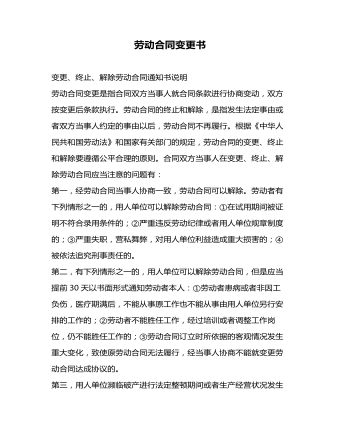
劳动合同变更书终止解除
第七,终止和解除合同后,对劳动者的经济补偿金,由用人单位一次性发给。用人单位克扣或者无故拖欠劳动者工资的,以及拒不支付劳动者延长工作时间工资报酬的,除在规定的时间内全额支付劳动者工资报酬外,还需加发相当于工资报酬25%的经济补偿金。
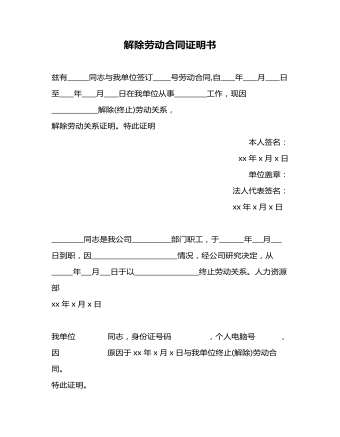
解除劳动合同证明书
_________同志是我公司___________部门职工,于_______年___月___日到职,因________________________情况,经公司研究决定,从______年___月___日于以__________________终止劳动关系。人力资源部xx年x月x日
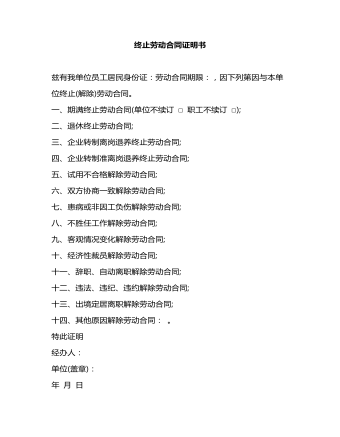
终止劳动合同证明书
一、期满终止劳动合同(单位不续订□ 职工不续订 □);二、退休终止劳动合同;三、企业转制离岗退养终止劳动合同;四、企业转制准离岗退养终止劳动合同;五、试用不合格解除劳动合同;六、双方协商一致解除劳动合同;
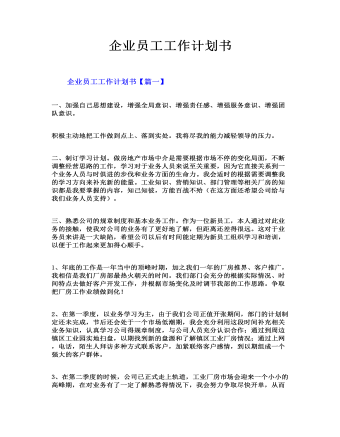
企业员工工作计划书
二、制订学习计划。做房地产市场中介是需要根据市场不停的变化局面,不断调整经营思路的工作,学习对于业务人员来说至关重要,因为它直接关系到一个业务人员与时俱进的步伐和业务方面的生命力。我会适时的根据需要调整我的学习方向来补充新的能量。工业知识、营销知识、部门管理等相关厂房的知识都是我要掌握的内容,知己知彼,方能百战不殆(在这方面还希望公司给与我们业务人员支持)。 三、熟悉公司的规章制度和基本业务工作。作为一位新员工,本人通过对此业务的接触,使我对公司的业务有了更好地了解,但距离还差得很远。这对于业务员来讲是一大缺陷,希望公司以后有时间能定期为新员工组织学习和培训,以便于工作起来更加得心顺手。
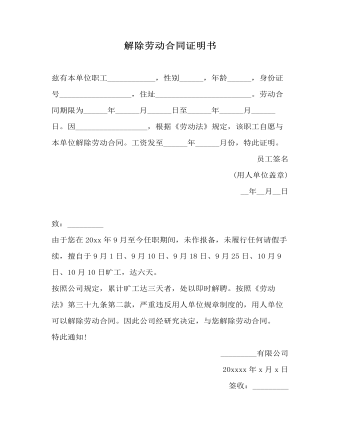
解除劳动合同证明书样本
致:_________由于您在20xx年9月至今任职期间,未作报备,未履行任何请假手续,擅自于9月1日、9月10日、9月18日、9月25日、10月9日、10月10日旷工,达六天。按照公司规定,累计旷工达三天者,处以即时解聘。按照《劳动法》第三十九条第二款,严重违反用人单位规章制度的,用人单位可以解除劳动合同。因此公司经研究决定,与您解除劳动合同。
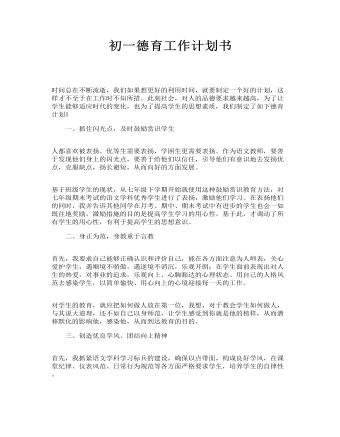
初一德育工作计划书
一、抓住闪光点,及时鼓励赏识学生 人都喜欢被表扬。优等生需要表扬,学困生更需要表扬。作为语文教师,要善于发现他们身上的闪光点,要善于给他们以信任,引导他们有意识地去发扬优点,克服缺点,扬长避短,从而向好的方面发展。 基于班级学生的现状,从七年级下学期开始就使用这种鼓励赏识教育方法,对七年级期末考试的语文学科优秀学生进行了表扬,激励他们学习。在表扬他们的同时,我并告诉其他同学在月考、期中、期末考试中有进步的学生也会一如既往地奖励。激励措施的目的是提高学生学习的用心性。基于此,才调动了所有学生的用心性,有利于提高学生的思想意识。
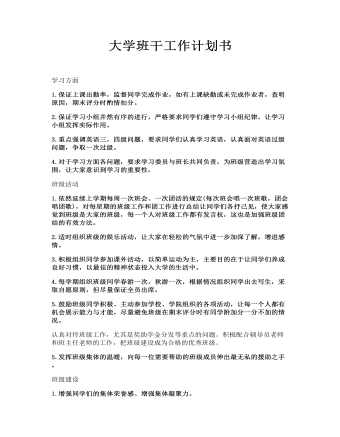
大学班干工作计划书
1.依然延续上学期每周一次班会、一次团活的规定(每次班会唱一次班歌,团会唱团歌),对每星期的班级工作和团工作进行总结让同学们各抒己见,使大家感觉到班级是大家的班级,每一个人对班级工作都有发言权,这也是加强班级团结的有效方法。2.适时组织班级的娱乐活动,让大家在轻松的气氛中进一步加深了解,增进感情。
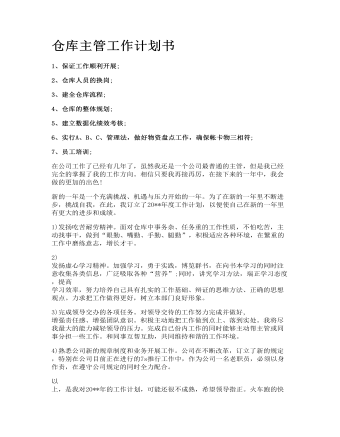
仓库主管工作计划书
1)发扬吃苦耐劳精神。面对仓库中事务杂、任务重的工作性质,不怕吃苦,主动找事干,做到“眼勤、嘴勤、手勤、腿勤”,积极适应各种环境,在繁重的工作中磨练意志,增长才干。2) 发扬虚心学习精神。加强学习,勇于实践,博览群书,在向书本学习的同时注意收集各类信息,广泛吸取各种“营养”;同时,讲究学习方法,端正学习态度,提高 学习效率,努力培养自己具有扎实的工作基础、辩证的思维方法、正确的思想观点。力求把工作做得更好,树立本部门良好形象。

